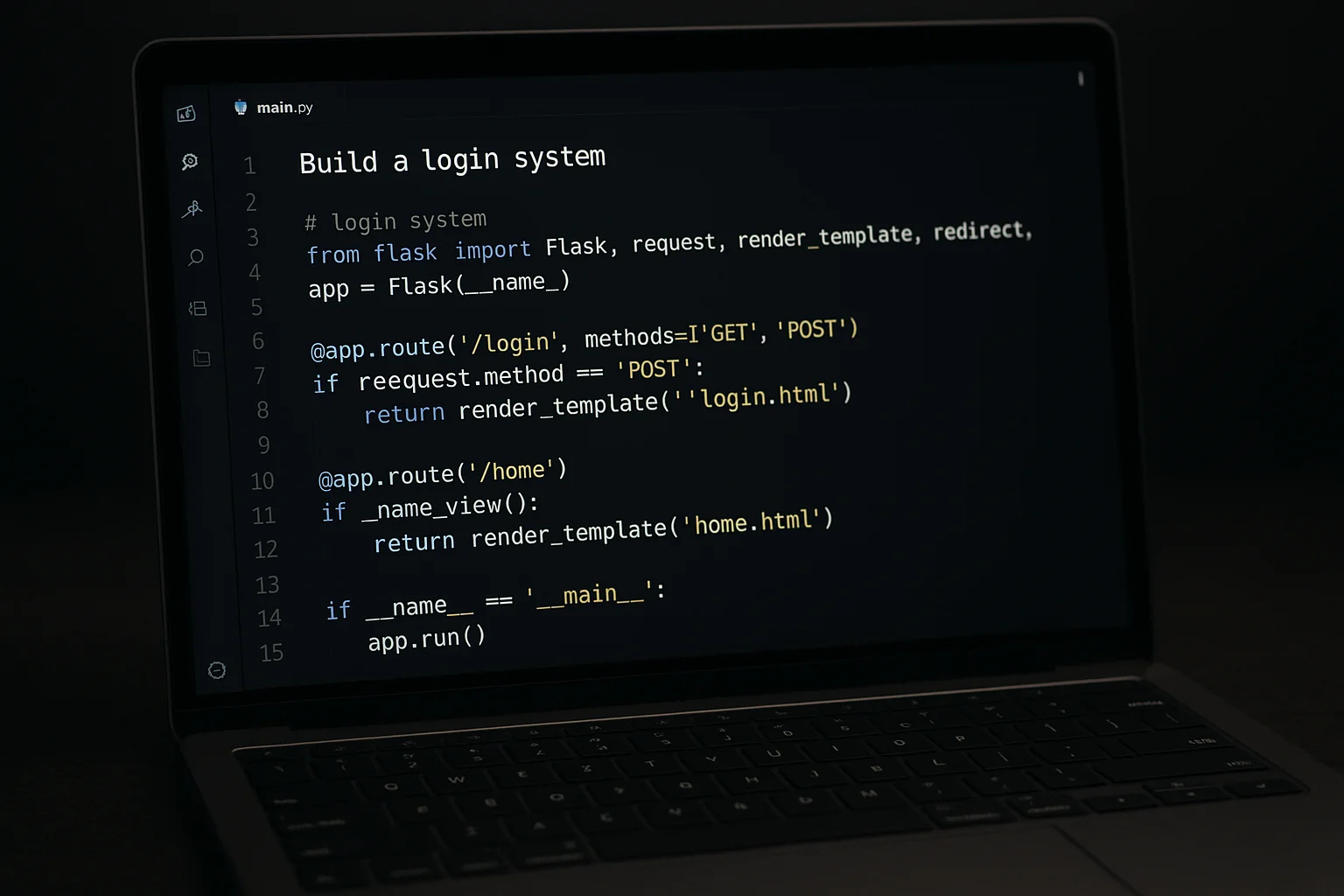 For decades, coding was all about memorizing syntax, fixing endless errors, and spending hours piecing together logic line by line. Fast forward to today, a new idea is taking shape in the developer world — something called Vibe Coding. It’s less about typing perfect code and more about creating in flow, with AI acting as a smart partner that understands what you want to build.
For decades, coding was all about memorizing syntax, fixing endless errors, and spending hours piecing together logic line by line. Fast forward to today, a new idea is taking shape in the developer world — something called Vibe Coding. It’s less about typing perfect code and more about creating in flow, with AI acting as a smart partner that understands what you want to build.
Instead of stressing over every bracket or semicolon, developers can finally focus on the bigger picture — solving problems and bringing ideas to life. The AI takes care of the repetitive stuff in the background, so coding feels less like a grind and more like a creative flow. That’s the essence of Vibe Coding: faster, smoother, and a whole lot more natural.
Why Everyone is Talking About Vibe Coding
 AI-assisted tools like GitHub Copilot, ChatGPT’s code interpreter, and Cursor are no longer just experiments — they’ve quickly become part of everyday programming. Instead of fighting with syntax or digging through documentation for hours, developers are starting to lean on these tools to handle the repetitive details and even suggest entire code blocks on the fly.
That’s really what people mean when they talk about vibe coding. It isn’t about taking developers out of the picture — it’s about shifting how they approach the work. Coding starts to feel less like wrestling with complexity and more like a back-and-forth, where ideas and problem-solving drive the process while the AI fills in the gaps.
And it’s not just developers taking notice. Interest in vibe coding has been climbing fast, with more businesses, tech leaders, and curious newcomers looking it up. Everyone seems to be asking the same thing: could this be the next big change in the way software gets built?
According to Financial Times, developers remain skeptical—AI-generated code is often unpredictable and can slow them down when over-relied upon.
AI-assisted tools like GitHub Copilot, ChatGPT’s code interpreter, and Cursor are no longer just experiments — they’ve quickly become part of everyday programming. Instead of fighting with syntax or digging through documentation for hours, developers are starting to lean on these tools to handle the repetitive details and even suggest entire code blocks on the fly.
That’s really what people mean when they talk about vibe coding. It isn’t about taking developers out of the picture — it’s about shifting how they approach the work. Coding starts to feel less like wrestling with complexity and more like a back-and-forth, where ideas and problem-solving drive the process while the AI fills in the gaps.
And it’s not just developers taking notice. Interest in vibe coding has been climbing fast, with more businesses, tech leaders, and curious newcomers looking it up. Everyone seems to be asking the same thing: could this be the next big change in the way software gets built?
According to Financial Times, developers remain skeptical—AI-generated code is often unpredictable and can slow them down when over-relied upon.How Vibe Coding Works in Practice
Vibe coding might sound abstract at first, but in practice, it’s surprisingly simple. It usually follows a flow where developers guide the AI instead of writing every single line themselves. Here’s how it typically works out:
1. Pick your platform
It starts with choosing an AI-powered coding assistant that fits your needs. Some prefer Replit for its flexibility, while others lean toward tools like GitHub Copilot or Cursor depending on performance, cost, or workflow. The platform doesn’t matter as much as having an AI partner that can keep up with your style.
2. Set the intention
The next step is telling the AI what you want to build. This isn’t about giving technical instructions line by line — it’s about writing a clear, goal-focused prompt. The better you describe your idea, the better the AI’s output. For example, you might say:
“Build me a simple login system with email and password, using React, and make sure it’s easy to expand later.”
From that one prompt, the AI can generate a complete starting point that would normally take hours to piece together.

3. Refine the output
No AI-generated code is perfect on the first try. Vibe coding is an iterative process — you test the initial draft, spot what’s missing, and refine your prompt or tweak the code directly. Think of it like sculpting: the AI gives you the block of marble, and you shape it into what you really need.
4. Final review
Once the code looks solid, it’s time for the final polish. Developers review, debug, and adjust for performance or security before deploying. The heavy lifting is still done by the AI, but the developer ensures everything works in the real world.
That’s vibe coding in action: less about brute-forcing syntax and more about guiding the process, step by step, until your idea becomes a working product.
| Step | What You Do | What It Looks Like in Practice |
|---|---|---|
| 1. Pick your platform | Choose an AI-powered coding assistant that fits your needs. | GitHub Copilot, Cursor, Replit, etc. |
| 2. Set the intention | Write a clear, goal-driven prompt describing what you want to build. | “Build a login page in React with email + password.” |
| 3. Refine the output | Test the AI’s draft and improve it by refining prompts or tweaking code. | Debugging + re-prompting = better version |
| 4. Review and ship | Polish, check performance/security, and finalize deployment. | Final code ready for real-world use |
Popular Vibe Coding Platforms and Apps
When people talk about vibe coding, a few tools always come up. Each has its own strengths, from real-time code suggestions to quick prototyping in the browser. Here’s a side-by-side look at the most talked-about platforms:
| Platform | Best For | Key Features | Why It Fits Vibe Coding |
|---|---|---|---|
| GitHub Copilot | Everyday coding inside VS Code or JetBrains | AI pair-programmer that suggests functions, fixes, and full snippets | Keeps you in flow by handling repetitive code and boilerplate |
| Cursor AI | Developers who like conversational coding | Lets you “chat” with your code, edit via natural language | Turns coding into a dialogue instead of a technical grind |
| TabNine | Lightweight, predictive completions | Trained on open-source code, fast inline suggestions | Helps reduce keystrokes and errors — great for rhythm |
| Replit Ghostwriter | Quick prototyping in the browser | AI assistant built into Replit, supports multiple languages | No setup required — experiment instantly online |
These platforms show that vibe coding isn’t just theory — it’s already here. Whether you’re just starting out or building complex projects, they make coding feel faster, smoother, and more creative.
Benefits of Vibe Coding for Developers and Businesses
Vibe coding isn’t just about making life easier for developers, it’s changing the way entire teams and companies approach software projects.
For developers, the advantages are clear. Coding becomes faster and less faulty when AI handles the repetitive syntax and debugging. Instead of getting stuck in small details, developers can spend more time solving problems, experimenting with new ideas, and actually enjoying the creative side of programming.
For businesses, the impact is just as powerful. Projects can move from concept to prototype in record time, cutting down both costs and delivery schedules. Teams can test ideas quickly, iterate faster, and bring solutions to market without being slowed down by the usual development bottlenecks.
In many ways, this ties back to how we’ve seen AI transform business processes more broadly, from customer service to logistics. Just like AI creates efficiency in other fields, vibe coding is doing the same for software development.
Productivity Stats
IT Revolution Study (Sep 2024):
Developers using Copilot completed 26% more tasks, increased code commits by 13.5%, and compiled code 38.4% more frequently—with no drop in quality.Stack Overflow AI Survey (2024):
81% of developers cite “increasing productivity” as the key benefit of AI tools.
Speeding up learning: 62% overall (71% for learners).
Challenges and Criticism
Like any new approach, vibe coding isn’t without its critics. Some developers worry that relying too heavily on AI could make people lazy — typing less, thinking less, and slowly losing touch with the fundamentals of programming.
There’s also the question of over-dependence. When AI handles so much of the work, what happens if the suggestions are wrong or incomplete? Without careful review, errors can sneak into production code, leading to performance issues or even security risks.
And while AI-powered tools are getting smarter every day, they’re not perfect. Generated snippets may work, but they aren’t always optimized or written with long-term maintainability in mind. That means human oversight remains critical. Vibe coding works best as a partnership, not a replacment.
The Future of Vibe Coding – Where Do We Go Next?
 Vibe coding is steadily moving beyond being a niche concept and is on its way to becoming a standard way of developing software. With AI models continuing to improve, these tools will soon be built right into popular IDEs, cloud platforms, and team environments, making coding and collaboration smoother than ever.
Vibe coding is steadily moving beyond being a niche concept and is on its way to becoming a standard way of developing software. With AI models continuing to improve, these tools will soon be built right into popular IDEs, cloud platforms, and team environments, making coding and collaboration smoother than ever.
Instead of treating programming as a strict battle with syntax, the focus will shift toward creativity and problem-solving. Developers will guide the vision, while AI helps turn ideas into running code much faster.
As this way of working continues to evolve, it’s likely to reshape not just how we code, but how we think about building technology itself.
Build custom AI solutions that deliver real business value
From strategy to deployment, we help you design, develop, and scale AI-powered software that solves complex problems and drives measurable outcomes.



